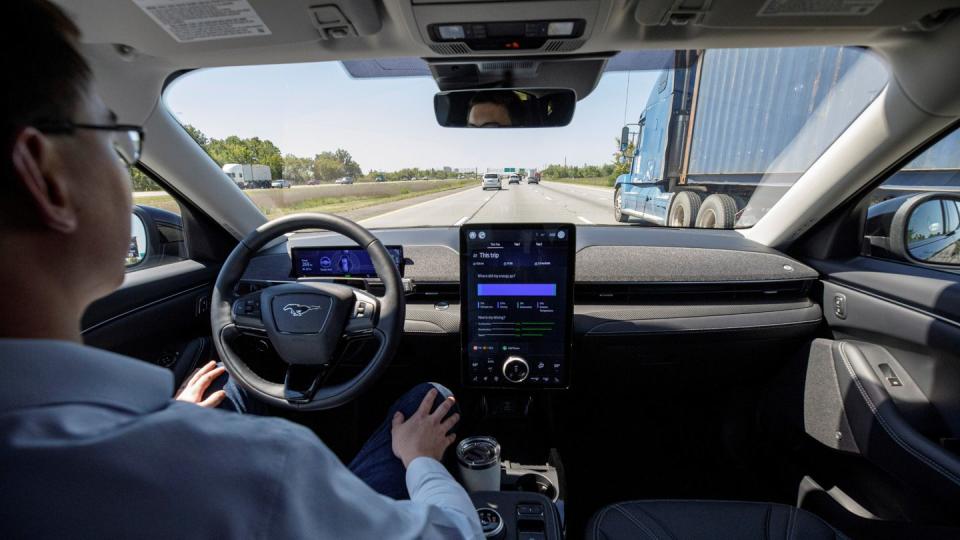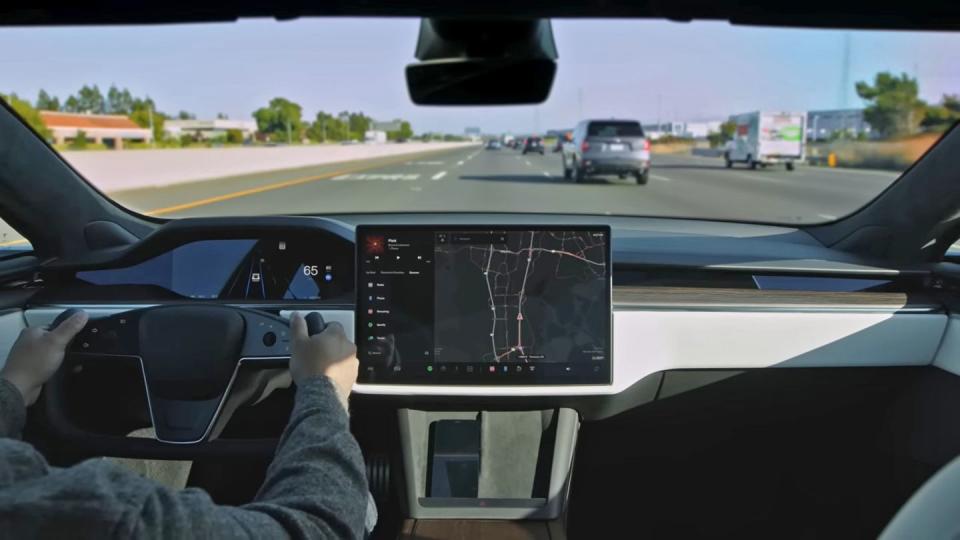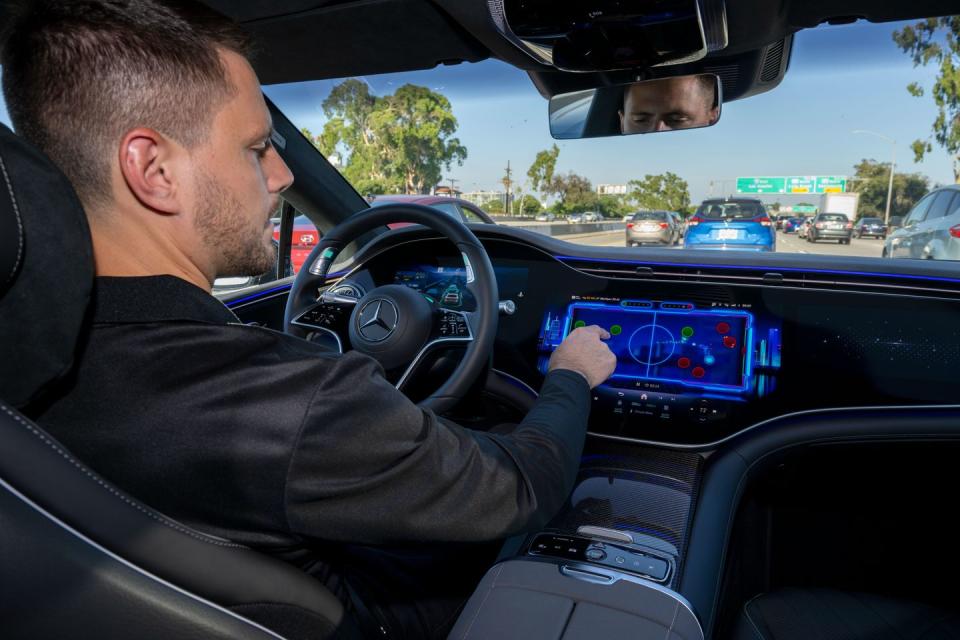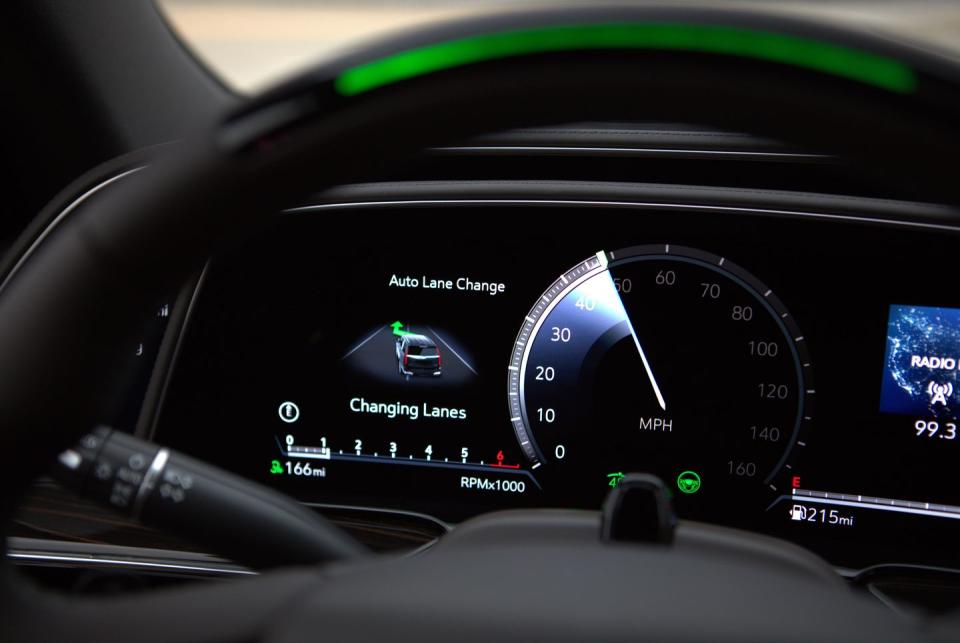How Automated Driving Systems from 9 Automakers Stack Up, according to the IIHS

Autonomous vehicles continue to exist in a state of limbo for the average consumer, with limited access to fully autonomous testers and consistent availability of Level 2 semi-autonomous features.
Now, the IIHS wants to categorize and rank the commercially available semi-autonomous systems, in an effort to understand the safety limitations of each automaker's version.
With stringent rules, only the Lexus Teammate and Nissan ProPilot with Navi-link systems managed to get an acceptable rating out of 14 systems tested.
Depending on who you ask, the world of autonomous vehicle testing is either the Wild West or a sea of government regulations designed to slow progress. There's some truth to both sides of the rhetoric here, but the rules governing autonomous testing and the semi-autonomous systems found on most modern models isn't that expansive, at least federally.
The federal response to regulating autonomous vehicles has been slow, often leaving states to locally regulate testing. Laid out in the US Department of Transportation's Automated Vehicles Comprehensive Plan (released in 2021), automakers who employ SAE Level 2 ADAS are simply required to report crashes.

Pulling from the National Highway Traffic Safety Administration's 2022 report on Level 2-related crash data, manufacturers reported 367 ADAS-attributable crashes between July 2021 and May 2022. That's a slim number inside a short testing period with a lot of data methodology caveats from the NHTSA.
As such, it's not that surprising that the Insurance Institute for Highway Safety—watchdog organization that it is—is proposing a thorough and organized rating system for the currently available Level 2 systems. Specifically, the IIHS is planning to rank and rate each automaker's system on the scale same that it does for crash tests, from good to poor.
In order to receive the coveted rating of good, manufacturers will need to monitor the driver's gaze and hand position, use multiple types of rapidly escalating alerts, have fail-safe procedures that automatically slow the vehicle, and require driver-initiated automated lane changes.
Automatic features (like radar cruise control) should not function independently following pauses nor without a seatbelt fastened. Finally, the IIHS also says that lane-centering functions should not discourage or fight the driver from manually steering.
"We evaluated partial automation systems from BMW, Ford, General Motors, Genesis, Lexus, Mercedes-Benz, Nissan, Tesla, and Volvo," IIHS President David Harkey said. "Most of them don't include adequate measures to prevent misuse and keep drivers from losing focus on what's happening on the road."

The results of these preliminary tests aren't pretty, at least not for automakers who were largely unprepared for such parameter-based testing. Even so, it's long been true that these systems (no matter the manufacturer) aren't always the most reliable in managing typical roadway scenarios.
Specifically, Lexus' Teammate system was the only system of the 14 tested to garner an acceptable rating, not even a good rating. According to the IIHS, the Lexus system was proficient at reminding drivers to stay alert, requiring driver-spurred automated lane changes, and cooperating with driver steering inputs.

GM's Super Cruise and Nissan's ProPilot Assist with Navi-link were not far behind, both earning marginal ratings. Super Cruise was praised for its safety features, emergency procedures, and frequent attention reminders, while Nissan's version excelled at providing cooperative steering and specific automation mode initiation.
BMW Active Driving Assistant Pro, Ford BlueCruise, Ford Adaptive Cruise Control, Genesis Highway Driving Assist 2, Genesis Smart Cruise Control, Lexus Dynamic Radar Cruise Control, Mercedes-Benz Active Distance Assist, Nissan ProPilot Assist 2.0, Tesla Autopilot Version 2023.7.10, Tesla Full Self-Driving, and Volvo Pilot Assist all earned poor ratings.
Each system showed its own unique deficiencies, at least compared to IIHS standards. One consistent throughline for all the poorly rated systems (save for Ford's) was inadequate driver monitoring. Beyond watching the driver's eyes, the IIHS is proposing a test that can identify when a foam block the size of a cell phone is being held by the driver.
This feat was challenging for most of the systems tested, though BMW and Mercedes were both noted as particularly ineffectual. Notably, the BMW system didn't turn off or even react when the eye monitoring camera was covered up, while Mercedes didn't even use an eye monitoring camera.
Alerting distracted drivers is a key tenant of safe semi-autonomous systems, as Level 2 rules dictate that drivers should be ready to take full control at any time. Lexus, GM, and Ford remain adequate in this sense, employing a tiered alert scale with three levels and the eventual introduction of emergency procedures.

Following this thread, emergency procedures are perhaps the most critical component of semi-autonomous systems. In the case of driver incapacitation, simply allowing a vehicle to run away is not exactly acceptable. As a result, the IIHS says systems should begin a slowdown procedure within 35 seconds of driver disengagement and send out an SOS message before shutting off the automation entirely.
Unfortunately, only GM's Super Cruise met these requirements. Five of the 14 systems managed to fulfill two of the three requirements while another five at least initiated a slow-down procedure. Lexus' Dynamic Radar Cruise Control and both Genesis systems did nothing in response to an incapacitated driver in IIHS testing.
"The shortcomings vary from system to system," said IIHS Senior Research Scientist Alexandra Mueller, who led the development of the new program. "Many can be used despite occupants being unbelted or when other vital safety features are switched off."
"These results are worrying, considering how quickly vehicles with these partial automation systems are hitting our roadways," Harkey said. "But there's a silver lining if you look at the performance of the group as a whole. No single system did well across the board, but in each category, at least one system performed well."
In Harkey's eyes, that means many of these shortcomings are quickly rectifiable, sometimes with action as simple as a software update. Even so, the team of researchers at the IIHS wants to re-emphasize that vehicles with partial automation are not self-driving, period. While the agency expects improvements to be rapid, don't forget to simply drive the car when in doubt.
Do you use radar cruise control or other ADAS functions? Have you ever observed any worrying behavior from the systems? Please share your thoughts below.

 Yahoo Autos
Yahoo Autos 